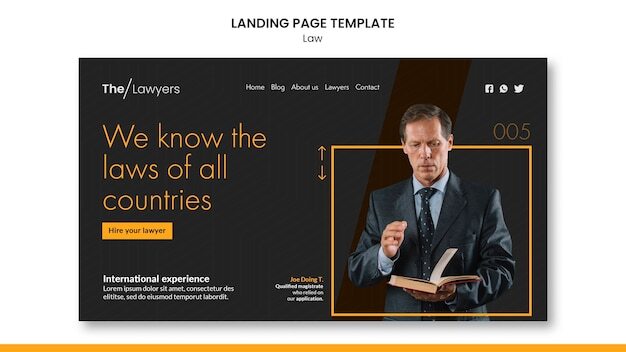- 1-905-452-8193
- Contact Us
- Member Login
- Get Listed Today
- 220,911 members

In today's digital age, having a well-designed website is crucial for any business, including law firms. A website serves as a virtual storefront, representing the firm's brand and providing valuable information to potential clients. However, when it comes to law firm website design, there are unique considerations to keep in mind to ensure a positive user experience (UX). This article will explore the key considerations for designing a law firm website that effectively engages users and drives conversions.
Before diving into the design process, it's essential to understand the target audience for a law firm website. Law firms cater to a diverse range of clients, including individuals, businesses, and other organizations. Each audience segment may have different needs and expectations when visiting a law firm's website. Therefore, conducting thorough research and creating user personas can help identify the specific needs and preferences of the target audience.
One of the primary goals of a law firm website is to provide users with easy access to relevant information. A clear and intuitive navigation menu is crucial for achieving this goal. The navigation menu should be well-organized, with logical categories and subcategories that reflect the firm's areas of specialization. Users should be able to find the information they're looking for within a few clicks, without feeling overwhelmed by excessive menus or confusing terminology.
With the increasing use of mobile devices, responsive design has become a necessity for any website, including law firm websites. A responsive design ensures that the website adapts seamlessly to different screen sizes, providing an optimal user experience regardless of the device being used. This is particularly important for law firms, as potential clients may be accessing the website from their smartphones or tablets while on the go. A mobile-friendly website can significantly improve the user experience and increase the chances of conversion.
While the content of a law firm website is undoubtedly important, engaging visuals and multimedia can enhance the user experience and make the website more appealing. Incorporating high-quality images, videos, and infographics can help break up text-heavy pages and make the content more digestible. It's essential to strike a balance between informative content and visually appealing elements to keep users engaged and encourage them to explore further.
Trust and credibility are crucial for any law firm, and the website design should reflect this. Including elements that showcase the firm's expertise, such as testimonials, case studies, and certifications, can help build trust with potential clients. Additionally, displaying client logos and affiliations can further establish credibility. Clear contact information and a professional design aesthetic also contribute to the overall trustworthiness of the website.
Designing a law firm website that prioritizes user experience (UX) is essential for attracting and converting potential clients. By understanding the target audience, implementing clear and intuitive navigation, utilizing responsive design, incorporating engaging visuals and multimedia, and building trust and credibility, law firms can create an impactful online presence that sets them apart from the competition. Remember, the user experience should always be at the forefront of any website design, ensuring that visitors have a positive and productive experience from start to finish.
